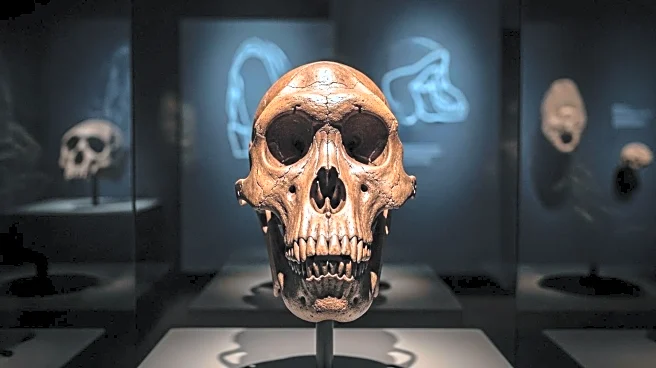What is the story about?
What's Happening?
A million-year-old skull found in China is challenging existing theories of human evolution. Researchers claim that the skull, named Yunxian 2, suggests Homo sapiens emerged at least half a million years earlier than previously thought. The study, published in Science, indicates that early versions of Neanderthals and Homo sapiens co-existed much longer than believed. The research team, including scientists from Fudan University and the UK's Natural History Museum, used anatomical and genetic analysis to reach their conclusions.
Why It's Important?
This discovery could significantly alter the timeline of human evolution, suggesting that Homo sapiens may have emerged much earlier than previously thought. It challenges the traditional view of human origins and interactions with other species, potentially leading to a reevaluation of evolutionary history. The findings also emphasize the importance of East Asia in understanding human evolution, as it may hold crucial clues to the development of early human species.
What's Next?
Further research is needed to confirm these findings, including more genetic data and analysis of other fossils from Africa and Europe. The researchers plan to extend their analyses to refine the picture of human evolution. The study raises questions about where the ancestral populations of Homo sapiens, Neanderthals, and Homo longi lived, potentially challenging the view of Africa as the sole cradle of humankind.
Beyond the Headlines
The study underscores the complexity of human evolution and the need for more evidence to fully understand the timeline and interactions between different human species. It also highlights the potential for new discoveries to dramatically alter scientific understanding of our origins.
AI Generated Content
Do you find this article useful?














